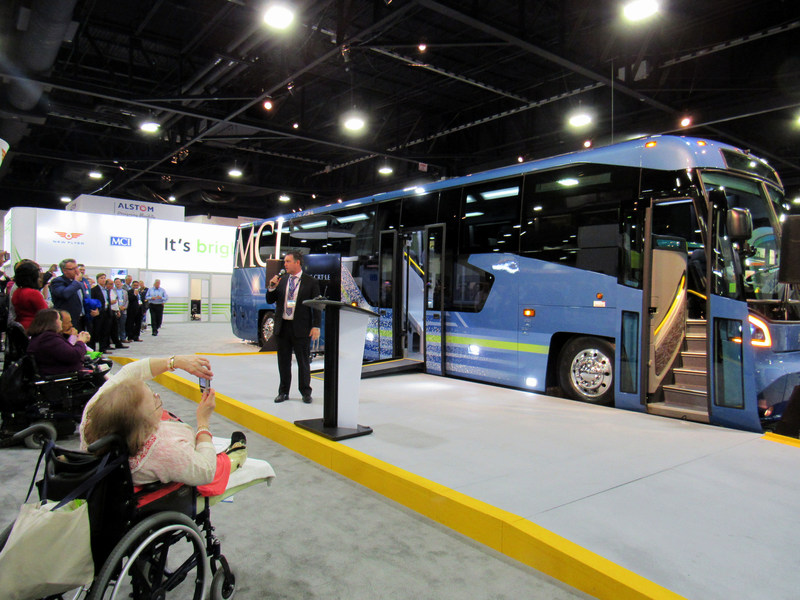amnesiajune
Senior Member
Also winter.
Buses aren't heated?
Also winter.
If you are elderly or have mobility issues, a bus can run the gamut from extremely uncomfortable to inaccessible.
A Breakthrough in Rider Accessibility and Commuter Rapid Transit: The New MCI D45 CRT LEThat's something that can be addressed by buying better buses.

The attitude about what the fascination is with train over bus is about the same as asking what is the fascination of having GO train service?
Weather can close highways, or make them unsafe to travel, or make them slow to travel.
Using a washroom on a bus is a challenge for most people. The washroom rocks with the road conditions. On a train, there is not much rocking.
Food service is common on long distance trains. They have hot meals. The bus stops once between North Bay and Toronto for a pit stop for you to run to get some food.
In short, rail is the better way to move people.
If you do not agree with that, then GO trains should be, and must be shut down.
Weather has the exact same effect on train service.
So, my friend who is an engineer with CN is lying to me? They do not reduce speed due to inclement weather. They do not reduce speed due to visibility.
So, the Northlander would be faster than the bus in bad weather.
Seated capacity of a GO coach is, I believe, 162 people so that would be a seated capacity of 1,620 on a 10 coach and 1,944 on a 12 coach....of course the standees add to that capacity.My understanding was that a GO train was closer to 1500 people? Regardless, still a lot of buses.
So, my friend who is an engineer with CN is lying to me? They do not reduce speed due to inclement weather. They do not reduce speed due to visibility. So, the Northlander would be faster than the bus in bad weather.
For proof, look no further than the $5.6-million ice rink on Parliament Hill, which was extended from 24 to 83 days of operation this afternoon as public backlash started to grow. That’s $67,500 each and every day before it’s unplugged and allowed to melt away, killing off a big chunk of Parliament Hill turf in the process.
So in the end, we have to decide between providing a luxurious service to serve a few people or spreading out the money to provide a more basic service that will serve a lot more people.
Just look at this:
Don Martin: Parliament Hill skating rink a teeth-grinding waste of tax dollars




